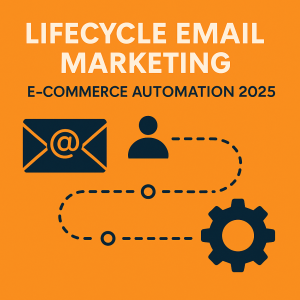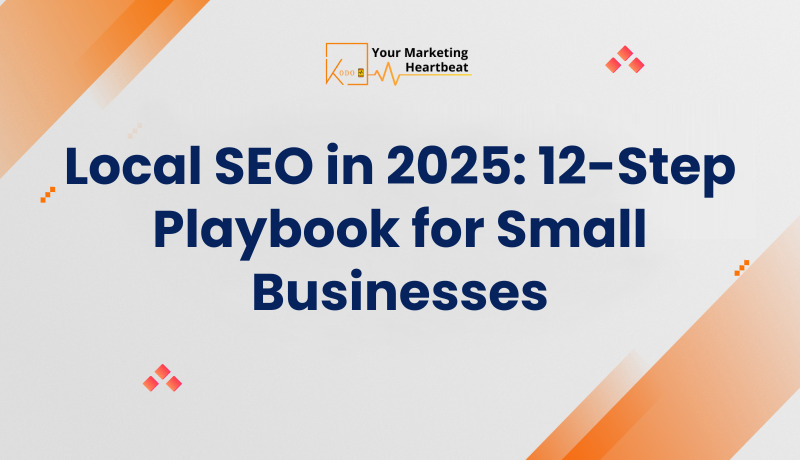Lifecycle Email Marketing: 2025 Customer Journey Automation for E-Commerce
In the rapidly evolving landscape of e-commerce, understanding the customer journey is paramount. As we step into 2025, businesses must leverage lifecycle email marketing to create personalized experiences that resonate with their audience. This article delves into the intricacies of customer journey mapping, emphasizing the importance of behavioral email triggers and retention campaigns in enhancing customer engagement and driving conversions.

Understanding Lifecycle Email Marketing
Lifecycle email marketing refers to the strategic approach of sending targeted emails based on the various stages of a customer’s journey. This method ensures that communications are relevant and timely, addressing the specific needs and behaviors of customers at each phase. By mapping out the customer journey, businesses can create tailored email campaigns that guide prospects from awareness to advocacy.
The Importance of Customer Journey Mapping
Customer journey mapping is a visual representation of the steps a customer takes when interacting with a brand. It encompasses every touchpoint, from initial awareness to post-purchase engagement. By understanding this journey, businesses can identify opportunities to enhance customer experiences and optimize their marketing strategies.
- Awareness Stage: This is where potential customers first encounter your brand. Effective email marketing at this stage focuses on capturing attention and encouraging sign-ups.
- Consideration Stage: Here, prospects evaluate your offerings. Emails should provide valuable content that addresses their questions and concerns.
- Decision Stage: At this critical juncture, customers are ready to make a purchase. Emails should include compelling calls to action and incentives to finalize the sale.
- Retention Stage: After a purchase, maintaining engagement is vital. Retention campaigns can include thank-you emails, product recommendations, and loyalty rewards.
- Advocacy Stage: Satisfied customers can become brand advocates. Encourage them to share their experiences through referral programs and social media engagement.
Key Stages of the Customer Journey
Understanding the key stages of the customer journey is essential for crafting effective email marketing strategies. Each stage presents unique opportunities for engagement and conversion.
1. Awareness Stage
In the awareness stage, potential customers are just beginning to learn about your brand. The goal is to capture their interest and encourage them to subscribe to your email list.
- Strategies:
- Offer valuable resources, such as eBooks or discount codes, in exchange for email sign-ups.
- Utilize engaging welcome emails that introduce your brand and its values.
2. Consideration Stage
Once prospects are aware of your brand, they enter the consideration stage. Here, they evaluate your products or services against competitors.
- Strategies:
- Send educational content, such as blog posts or how-to guides, that highlights the benefits of your offerings.
- Include customer testimonials and case studies to build trust and credibility.
3. Decision Stage
At the decision stage, customers are ready to make a purchase. Your emails should provide the final nudge they need to complete the transaction.
- Strategies:
- Use urgency in your messaging, such as limited-time offers or exclusive discounts.
- Implement cart abandonment emails to remind customers of items left in their shopping carts.
4. Retention Stage
After a purchase, the focus shifts to retaining customers. This stage is crucial for building long-term relationships and encouraging repeat business.
- Strategies:
- Send personalized follow-up emails thanking customers for their purchase and suggesting related products.
- Implement loyalty programs that reward customers for repeat purchases.
5. Advocacy Stage
The advocacy stage is where satisfied customers become brand ambassadors. Encouraging them to share their positive experiences can significantly impact your brand’s visibility.
- Strategies:
- Create referral programs that incentivize customers to refer friends and family.
- Encourage social media sharing by offering discounts or rewards for user-generated content.
Behavioral Email Triggers
Behavioral email triggers are automated emails sent based on specific actions taken by customers. These triggers enhance the relevance of your communications and improve engagement rates.
Types of Behavioral Triggers
- Welcome Emails: Sent immediately after a user subscribes, these emails introduce your brand and set the tone for future communications.
- Abandoned Cart Emails: These reminders prompt customers to return to their carts and complete their purchases.
- Post-Purchase Follow-Ups: Sent after a purchase, these emails thank customers and suggest complementary products.
- Re-Engagement Emails: Target customers who have not interacted with your brand for a while, encouraging them to return.
Benefits of Behavioral Triggers
- Increased Engagement: Personalized emails based on user behavior lead to higher open and click-through rates.
- Improved Conversion Rates: Timely reminders and relevant content can significantly boost sales.
- Enhanced Customer Experience: Customers appreciate receiving information that aligns with their interests and actions.
Retention Campaigns
Retention campaigns are designed to keep customers engaged and encourage repeat purchases. These campaigns are essential for maximizing customer lifetime value.
Strategies for Effective Retention Campaigns
- Personalized Recommendations: Use customer data to suggest products based on past purchases and browsing behavior.
- Exclusive Offers: Provide loyal customers with special discounts or early access to new products.
- Feedback Requests: Encourage customers to share their experiences and suggestions, demonstrating that their opinions matter.
- Loyalty Programs: Implement programs that reward customers for their continued support, fostering a sense of belonging.
Measuring Retention Success
To evaluate the effectiveness of your retention campaigns, track key metrics such as:
- Repeat Purchase Rate: The percentage of customers who make multiple purchases.
- Customer Lifetime Value (CLV): The total revenue generated from a customer over their lifetime.
- Churn Rate: The percentage of customers who stop engaging with your brand.
Crafting Compelling Email Content
Creating engaging email content is crucial for capturing attention and driving action. Here are some tips for crafting compelling emails:
1. Personalization
Use customer data to personalize your emails. Address recipients by name and tailor content based on their preferences and behaviors.
2. Clear Call to Action
Every email should include a clear call to action that guides recipients on what to do next. Whether it’s making a purchase or signing up for a webinar, ensure the CTA is prominent and compelling.
3. Engaging Subject Lines
The subject line is the first thing recipients see, so make it count. Use intriguing language and create a sense of urgency to encourage opens.
4. Visual Appeal
Incorporate visuals, such as images and infographics, to enhance the overall appeal of your emails. A well-designed email can significantly improve engagement rates.
Automating Your Email Campaigns
Automation is a powerful tool in lifecycle email marketing. By automating your campaigns, you can save time and ensure timely communications.
Benefits of Email Automation
- Consistency: Automated emails ensure that your messaging is consistent and timely.
- Efficiency: Save time by setting up automated workflows for various customer interactions.
- Scalability: As your business grows, automation allows you to manage larger email lists without sacrificing quality.
Tools for Email Automation
Consider using email marketing platforms that offer automation features, such as:
- Mailchimp: Known for its user-friendly interface and robust automation capabilities.
- HubSpot: Offers comprehensive marketing automation tools, including email workflows.
- ActiveCampaign: Focuses on advanced automation features and customer segmentation.
Analyzing Email Campaign Performance
To optimize your lifecycle email marketing efforts, it’s essential to analyze campaign performance regularly. This analysis helps identify areas for improvement and informs future strategies.
Key Metrics to Track
- Open Rates: Measure the percentage of recipients who open your emails.
- Click-Through Rates (CTR): Track the percentage of recipients who click on links within your emails.
- Conversion Rates: Monitor the percentage of recipients who complete a desired action, such as making a purchase.
- Unsubscribe Rates: Keep an eye on the percentage of recipients who opt out of your email list.
Tools for Performance Analysis
Utilize analytics tools provided by your email marketing platform to gain insights into campaign performance. Google Analytics can also be integrated to track website traffic generated from email campaigns.
Conclusion
As we move into 2025, lifecycle email marketing will play a pivotal role in shaping customer experiences in e-commerce. By understanding the customer journey and leveraging behavioral email triggers and retention campaigns, businesses can create meaningful connections with their audience.
Investing in customer journey mapping and automation will not only enhance engagement but also drive conversions and foster long-term loyalty. Embrace these strategies to stay ahead in the competitive e-commerce landscape and ensure your brand remains top-of-mind for customers at every stage of their journey.
By implementing these insights, we can collectively navigate the complexities of email marketing and build stronger relationships with our customers. Let’s embark on this journey together, ensuring that our email marketing efforts are not just effective but also resonate deeply with our audience.





April 23, 2024